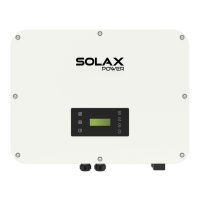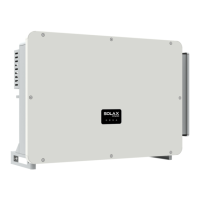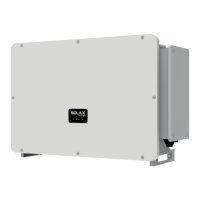12
Product Overview
Allowed discharging
period
PV is sufficient
(PV
→
load
→
battery
→
grid)
• The power generated from PV prioritizes supplying the load.
Any excess power is then directed towards charging the
battery, and if there is still surplus electricity, it can be sold to
the grid. In the event that the local utility restricts the sale of
electricity to the grid, the Export Control can be set to limit the
output to the grid. For specific settings, please refer to "Setting
Export Control".
PV is insufficient
(PV+battery
→
load)
• The battery discharges power to the load, and once its capacity
reaches Min SOC, it automatically ceases discharging.
Note:
Charge battery to: The battery SOC charged from grid. 30% by default, the settable range
is 10%~100%.
Min SOC: Minimum SOC of the battery under grid connection. 10% by default, the settable
range is 10%~100%.
Charge & Discharge Period
You can set two configurable working periods: forced charging period and allowed
discharging period. The interval not in the charging & discharging period belongs to other
time periods.
• Forced charging period (Default period: 00:00~00:00, closed by default)
In the forced charging period, the inverter will charge the battery first untill the battery SOC
reaches the specified Charge battery to value set in each working mode. You have the
option to configure the inverter to either draw power from the grid or not.
• Allowed discharging period (Default period: 00:00~23:59)
In the allowed discharging period, the inverter will allow the battery to discharge and
charge power in accordance with the working mode and load conditions.
• Period not set as forced charging or allowed dicharging period
In this period, the inverter will allow the battery to charge but can not discharge power.
NOTICE!
• The charging and discharging period is only applicable for self-use mode, feed-in
priority and backup mode. The priority of forced charging period is higher than all
working modes.

